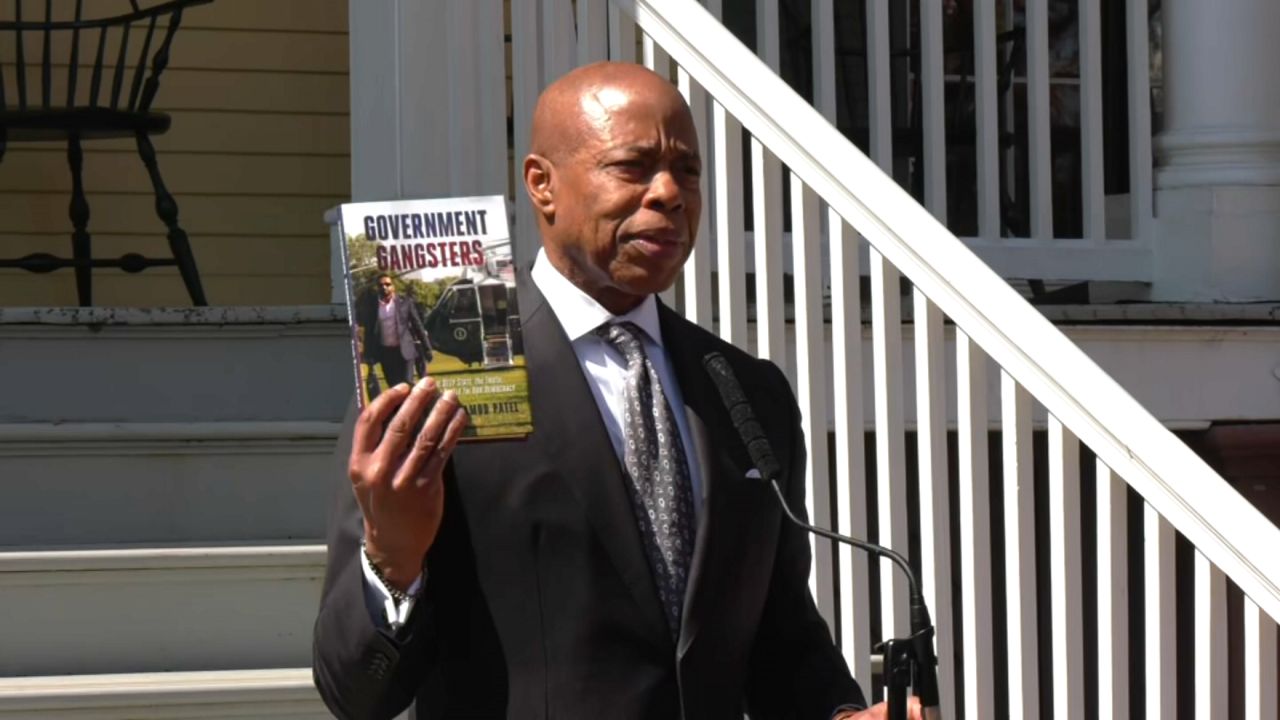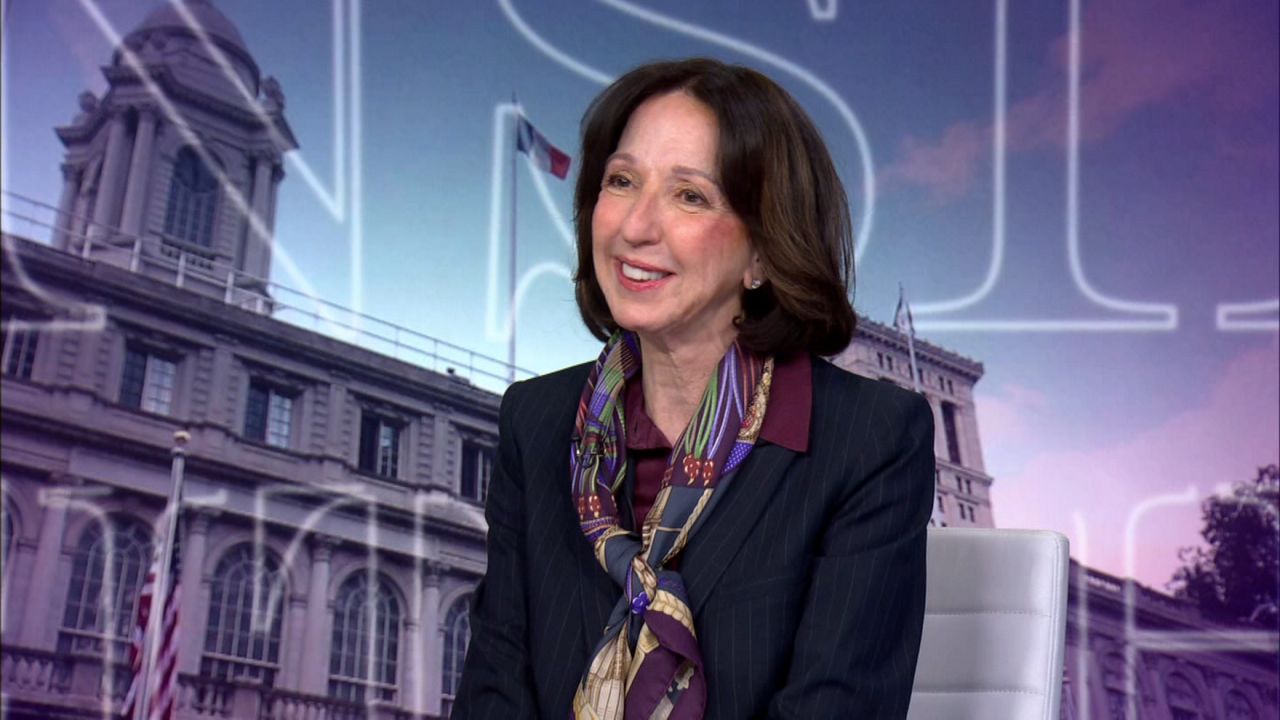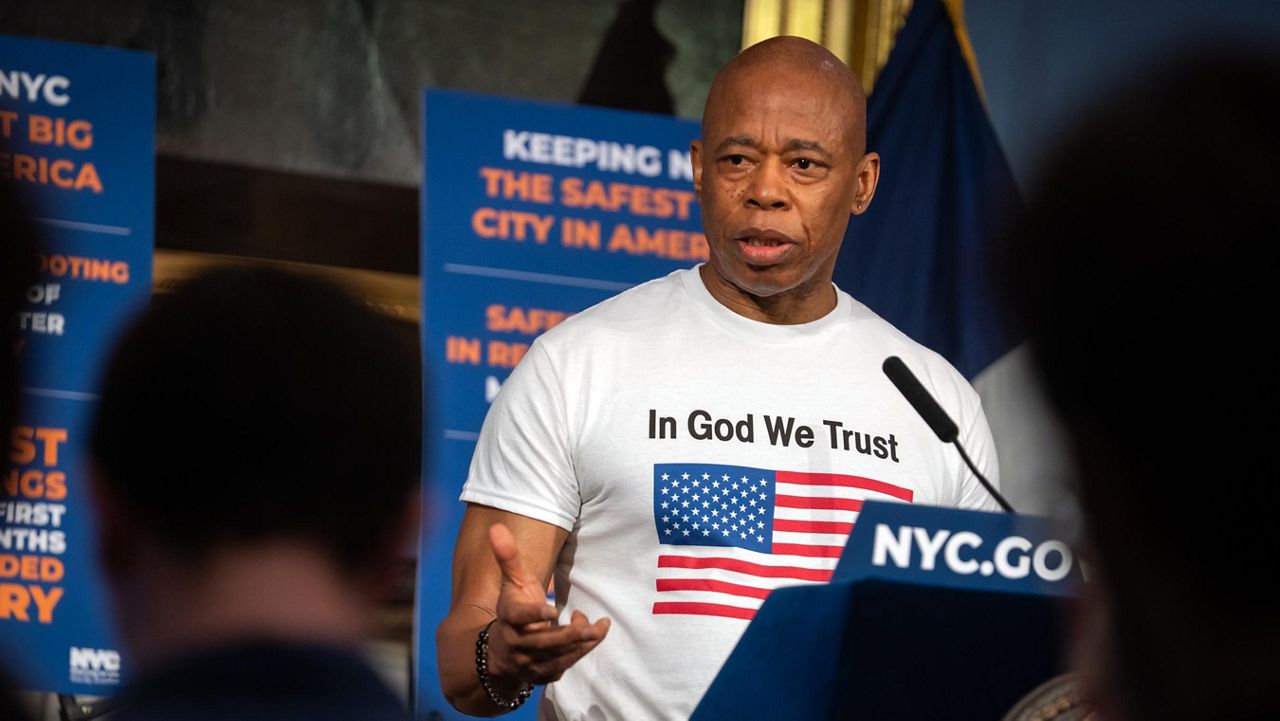Mayor Eric Adams might be the pilot of the plane but his crew members are just as important.
NY1 sat down with three of his top aides — his chief adviser Ingrid Lewis-Martin, chief of staff Camille Joseph Varlack and First Deputy Mayor Sheena Wright — to talk about issues facing the administration.
The three women are some of Adams‘ closest advisors, defending him from criticism in the media and some of the tabloid stories about his nights on the town, said Lewis-Martin.
“It’s just been unfair. They highlight all the negative stuff and they do not talk about all the positive and impactful things that have happened through his administration,” said Lewis-Martin.
What You Need To Know
- NY1 sat down to have an exclusive interview with three of Mayor Eric Adams' top aides, who are all women
- The trio talked about a host of issues including media criticism of the mayor's leadership, women in government and public safety
- The group also had a fun time comparing Adams with some NYC rapper
Lewis-Martin has worked with Adams for over 17 years and is acutely aware of the Brooklynite’s rise through local politics.
“I know what he did to ensure that when he became the mayor, he would be prepared. He used to take mayor classes, like who takes mayor classes? He took mayor classes from people in the city who knew and understood how this city operates because he wanted to be prepared and he is prepared,” she added.
Crime and public safety are issues that the mayor, a former police captain, has made a priority of his administration.
He has beefed up patrols on subways and implemented a mental health initiative that allows for New Yorkers struggling with a mental health crisis to be involuntarily hospitalized.
His aides echoed the need for New Yorkers to feel safe.
“It’s not just about adding more folks on the street. It’s about what we are doing and how we are being thoughtful. There is a balance to this,” said Varlack, who went into detail about the administration’s efforts to help vulnerable New Yorkers.
“We have individuals who have extreme emotional disorders. Making sure we aren’t rounding them up and putting them somewhere but that we are approaching them with dignity and respect,” added Varlack.
Wright, herself, said that before joining the administration she had concerns but continues to be a regular on the train.
“I’m a New Yorker, born and raised. I live here with my young children, one young child,” Wright said. “Before we came into office, it was sketchy. I was concerned about my 15-year-old going to the store and coming back and what was happening during the daytime. Things feel much different in my neighborhood. I still ride the subway. It’s still the best way to get around the city.”
In a bit of fun, the women were also asked to compare the mayor to some New York City rappers.
“I’m trying to think, I can’t even think in terms of personality wise…,” said Lewis-Martin.
Before Varlack jumped in to say: “I immediately go to Brooklyn… Jay-Z, Jay-Z.”
Wright agreed and said, “I think Jay-Z because he’s so innovative. He loves a blueprint. So we get a lot of blueprints in our administration.”
Lewis-Martin took a different approach, saying that Adams reminds her of a few famous rappers.
“I would say a little bit of Jay Z, a little bit of Ja Rule, a little bit of Biggie, a little bit of the brother who got killed in California,” Lewis-Martin said. “You know he also has a smooth side to him. So I got to give him someone who is not a rapper like an older guy like an Al Green.”
Putting women in positions of leadership is not new for Adams, who has made it a point to have a diverse administration.
“If you want to get something done, give it to a woman and if you really want to get something done, give it to a busy woman,” said Wright.
Lewis-Martin went on to note how women’s strong opinions aren’t always welcome but necessary for progress.
“Men use a lot of brute force. Women use a little more finesse. Sometimes when we have to be a little more aggressive, we get accused of being nasty, disrespectful or the B-I-T-C-H word. But sometimes you have to push your way in to have your voice heard,” she said.
The three women give a different look to an office that has a history of being dominated by white men.









